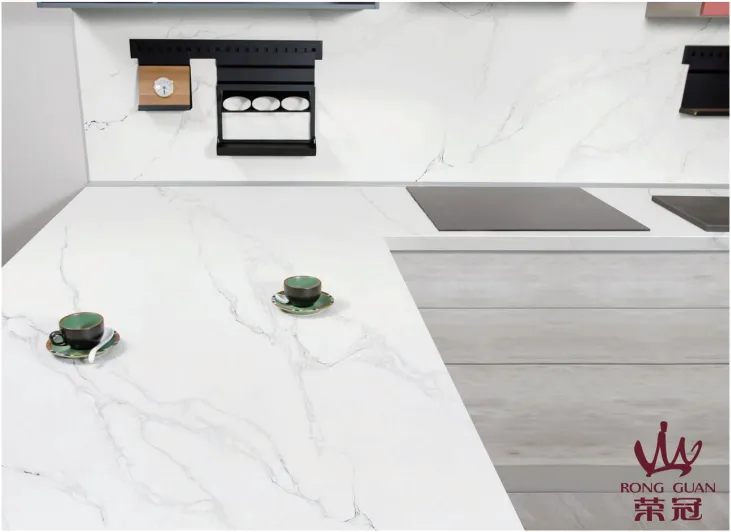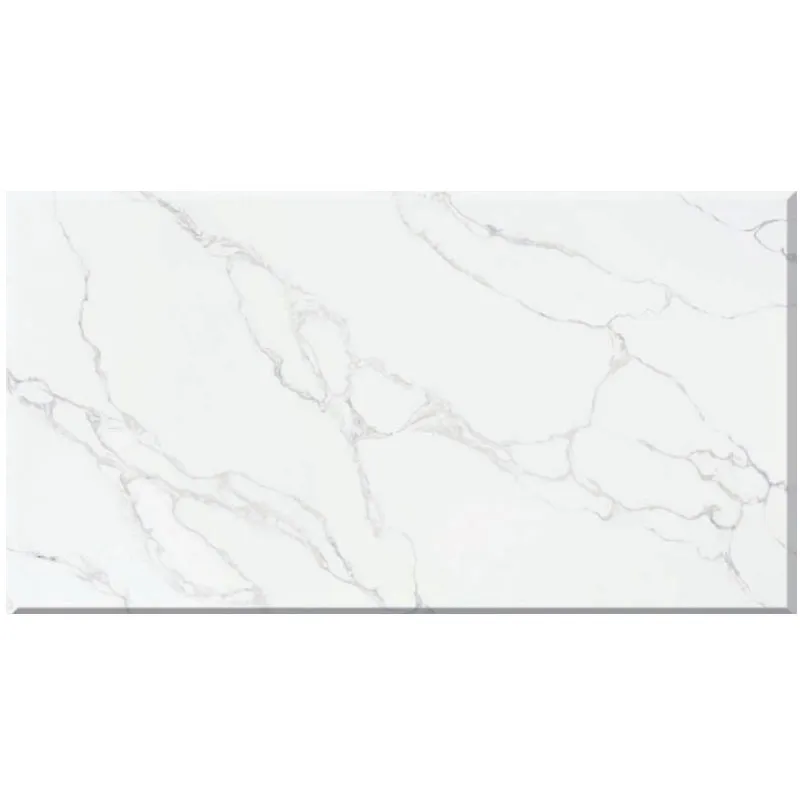With the change of modern kitchen design style, the island has become an indispensable element in the kitchen layout. As a design that can provide additional operating space and add aesthetics, the material selection and structural design of the island are particularly critical. Among many countertop materials, quartz stone countertop is favored for its durability, beauty and easy maintenance. However, many people will ask a key question when installing quartz stone island: Does the island made of quartz stone countertop need additional support?
This article will explore the question of whether the quartz stone countertop island needs support from the aspects of the physical properties of quartz stone countertop, the load-bearing requirements of the island, the importance of the support structure, and the installation details in practical applications, and provide professional insights.

What are the physical properties of quartz stone countertop?
To answer whether the quartz stone countertop island needs support, we must first understand the physical properties of quartz stone as a material and its performance in the countertop structure.
Hardness and durability of quartz stone
The main component of quartz stone is natural quartz particles, which have extremely high hardness. Quartz has a Mohs hardness of 7, which means it is extremely scratch-resistant and wear-resistant, which is why quartz is widely used in kitchen countertops. Quartz is not only wear-resistant, but also impact-resistant, so it can withstand certain external forces in daily use.
However, hardness does not represent the overall toughness of quartz. Under great external forces or unreasonable support, quartz may still break or crack. Therefore, although quartz is durable, its structural design must be reasonable, especially when it is applied to large overhanging areas.
Weight and thickness of quartz
Quartz stone countertops are not only hard, but also heavy. The thickness of a standard quartz stone countertop is usually 20mm or 30mm, and its density is about 2.4-2.6 tons per cubic meter. Based on this calculation, the weight of a quartz stone countertop may be as high as 60-80 kilograms per square meter. This means that for a large quartz stone island, the weight of the countertop will be considerable.
Because quartz is so heavy, when quartz is used for a long island or a cantilevered part, it is necessary to consider how to support its own weight to ensure that the countertop will not be deformed or damaged due to long-term suspension or uneven force.

What is the structural design and load-bearing requirements of the island?
As an independent work area in the kitchen, the island is usually designed as a large countertop, with storage cabinets, drawers, equipment embedded or even a completely empty area underneath. Different designs determine the support requirements of the island. Regardless of the design, load-bearing is a core issue that must be considered, especially when choosing heavy materials such as quartz as the countertop.
Cantilever design of island
The cantilever structure refers to the part of the countertop that is suspended without vertical support. This design is usually designed to increase the operating space or provide more seating area. For example, in an open kitchen, one side of the island is often designed to be cantilevered, used as a breakfast bar or temporary dining area.
For the design of the cantilevered part, whether the quartz stone countertop needs additional support depends on the length of the cantilever and the thickness of the countertop. Generally, the industry standard holds that if the overhang does not exceed one-third of the countertop depth and the thickness of the quartz stone countertop is about 30mm, no additional support is required. However, if the overhang exceeds this ratio, or the countertop is thin (20mm), additional support structures must be added to prevent the quartz stone from breaking due to gravity.
Types of support structures
For quartz stone countertops that require support, there are several common support structures to choose from:
● Bottom cabinet support: This is the most common support method. The quartz stone countertop is directly installed on the bottom cabinet or frame, and the cabinet structure bears the weight of the countertop. This method is suitable for island designs without overhangs.
● Metal bracket support: For countertops with overhangs, metal brackets are an effective support method. The brackets are usually installed on the side or bottom of the cabinet to support the suspended part of the quartz stone countertop. Metal brackets have a strong load-bearing capacity and can be installed in a hidden manner without affecting the beauty of the countertop.
● Countertop support strips: The support strips are usually long strips made of metal or wood, installed under the countertop and parallel to the length of the countertop. This method can provide uniform support for the entire countertop, especially for long islands.
● Wall support: In some special designs, part of the island can be supported by a wall or column. Although this design is more complicated, it can provide a stable load-bearing capacity for the quartz stone countertop.
Analysis of support requirements for quartz stone countertop islands
Combining the physical properties of quartz stone with the structural design of the island, we can further analyze the support requirements of quartz stone countertops in practical applications.
Potential risks in the absence of support
If the cantilevered part of the quartz stone countertop island design is too long, or there is a lack of appropriate support structure under the countertop, the following problems may occur:
● Quartz stone countertop fracture: Although quartz stone has high hardness, it has weak toughness, especially when uneven force is applied, it is prone to cracks or fractures. In the cantilever design, if there is not enough support, the suspended part will bear too much gravity, resulting in cracks in the countertop.
● Countertop deformation: Even if there is no breakage, the quartz stone countertop may deform slightly under the action of gravity for a long time, affecting its appearance and use effect.
Key factors to determine support requirements
When deciding whether support is needed, the following key factors must be considered:
● Countertop thickness: A thicker quartz stone countertop (such as 30mm) has better load-bearing capacity than a thinner countertop (such as 20mm). If you choose a thinner quartz stone countertop, you must ensure that there is sufficient support structure underneath it.
● Overhang length: The longer the overhang length, the greater the support demand. It is generally recommended that a support structure must be installed when the overhang length exceeds one-third of the depth of the countertop.
● Island usage scenario: If the island needs to frequently carry heavy objects (such as electrical appliances, food, etc.), the support demand is more important. Even for a smaller overhang part, it is recommended to add a support structure when it frequently carries heavy objects.

Key points for the design and installation of the support structure
After clarifying the support requirements, the correct design and installation of the support structure is the key to ensuring the long-term and stable use of the quartz stone countertop. Here are some key points to note when designing and installing support structures:
Material selection
The material selection of the support structure is crucial. Metal brackets are usually preferred because of their high strength and durability. In addition, wooden support structures can also be used, but wood may affect its load-bearing capacity due to moisture or aging. Therefore, metal materials are more suitable for supporting quartz stone countertops for a long time.
Concealment of support structure
When designing a support structure, aesthetics is also one of the factors to consider. Concealed support structures (such as built-in metal brackets or support strips) can ensure the load-bearing capacity without affecting the overall appearance of the island, keeping the countertop simple and beautiful.
Installation location and quantity
The installation location and quantity of the support structure should be reasonably arranged according to the specific design of the island. For countertops with a large cantilever length, the support structure should be distributed as evenly as possible to ensure that the countertop can receive sufficient support at each position.
Does the quartz stone countertop island need support?
In summary, whether a quartz stone countertop needs support depends mainly on the following factors:
● Overhang length: If the island has an overhang design and the overhang length exceeds one-third of the depth of the countertop, a support structure must be added.
● Countertop thickness: Thicker quartz stone countertops have a stronger load-bearing capacity, but the support structure still needs to be carefully designed in the overhang area.
● Usage scenario of the island: In the design of islands that are frequently used or need to bear heavy objects, it is recommended to add a support structure to ensure the long-term stability and safety of the countertop.
At Rongguan, we take pride in producing high-quality building materials that cater to both residential and commercial needs. Our extensive product line includes quartz stone countertops, artificial marble, and decorative roof tiles, all crafted with precision and care. Located in Foshan, our factory uses state-of-the-art technology to ensure efficiency and consistency in every order. Trusted by distributors and contractors worldwide, we offer factory-direct pricing, custom designs, and exclusive bulk order discounts. Discover why Rongguan is a preferred choice for building materials globally.

